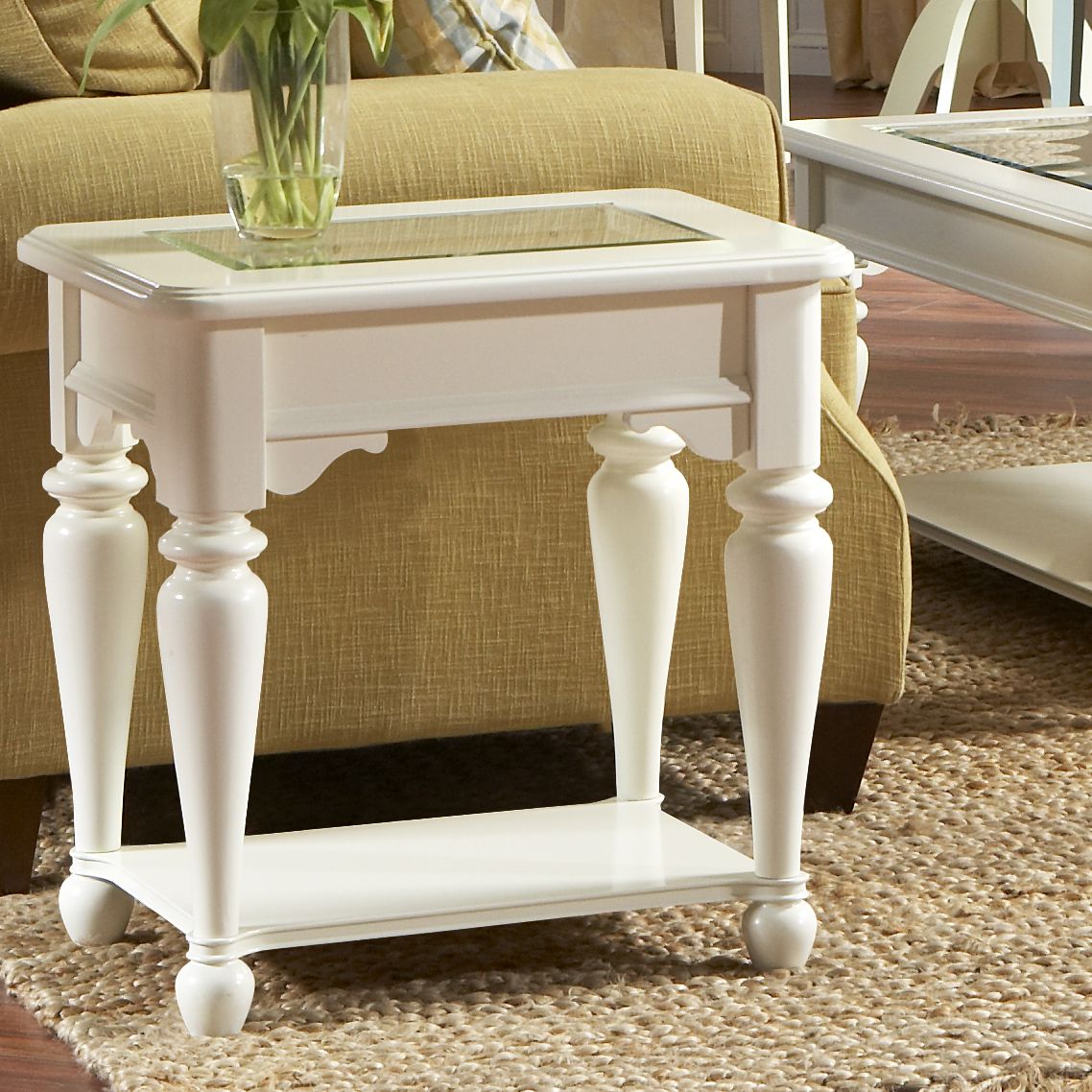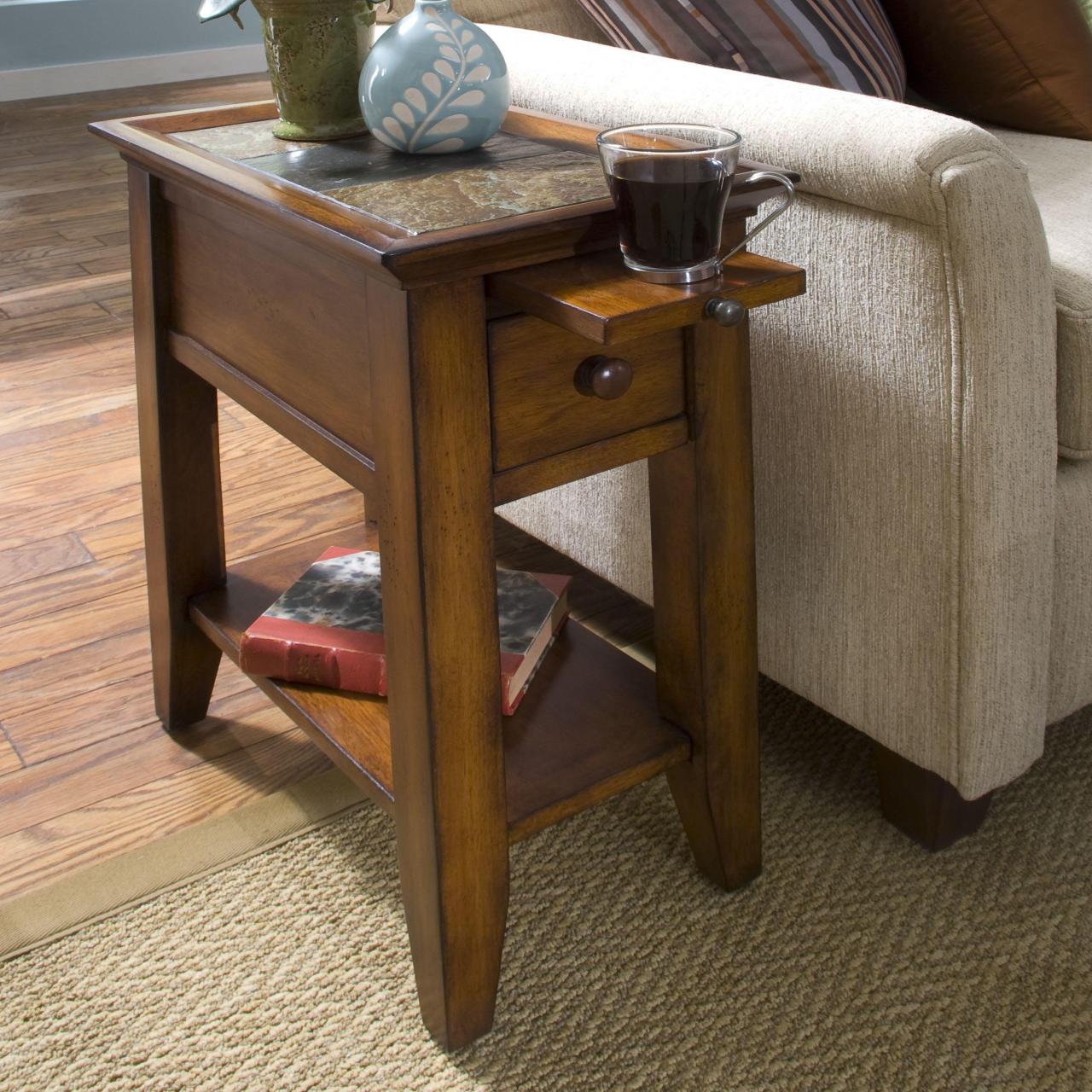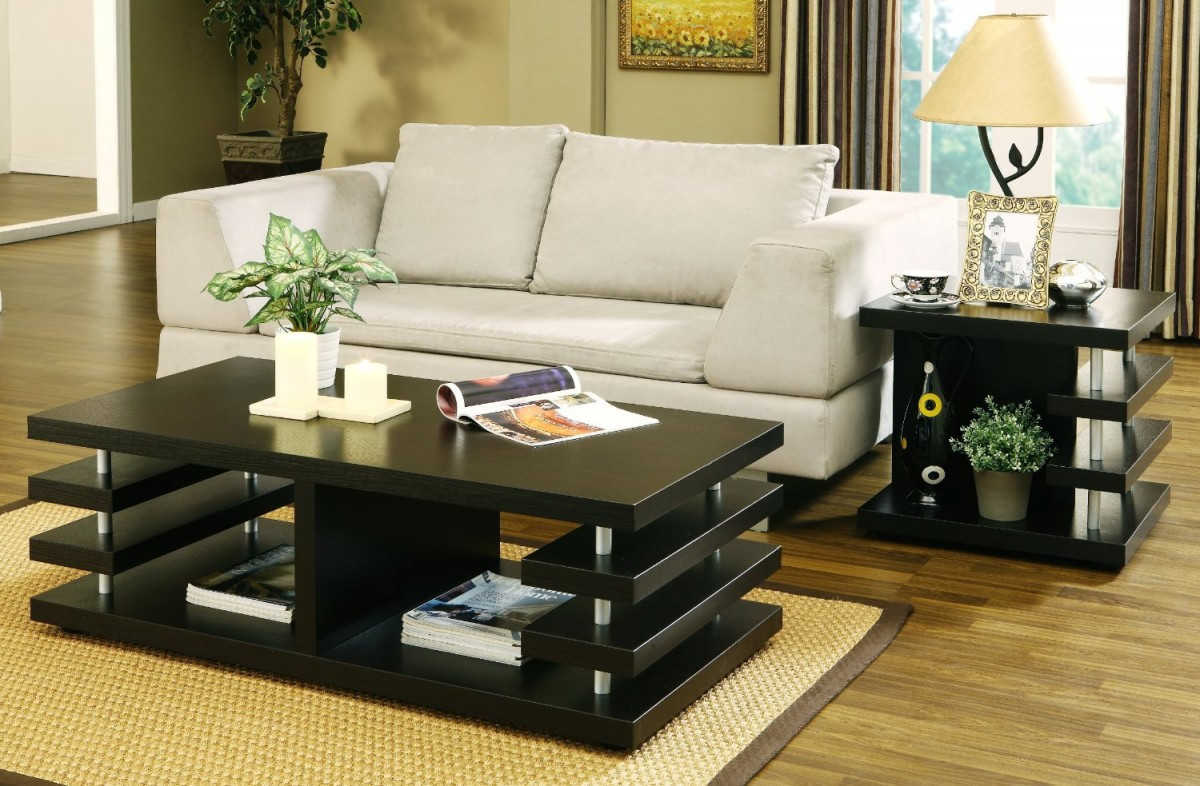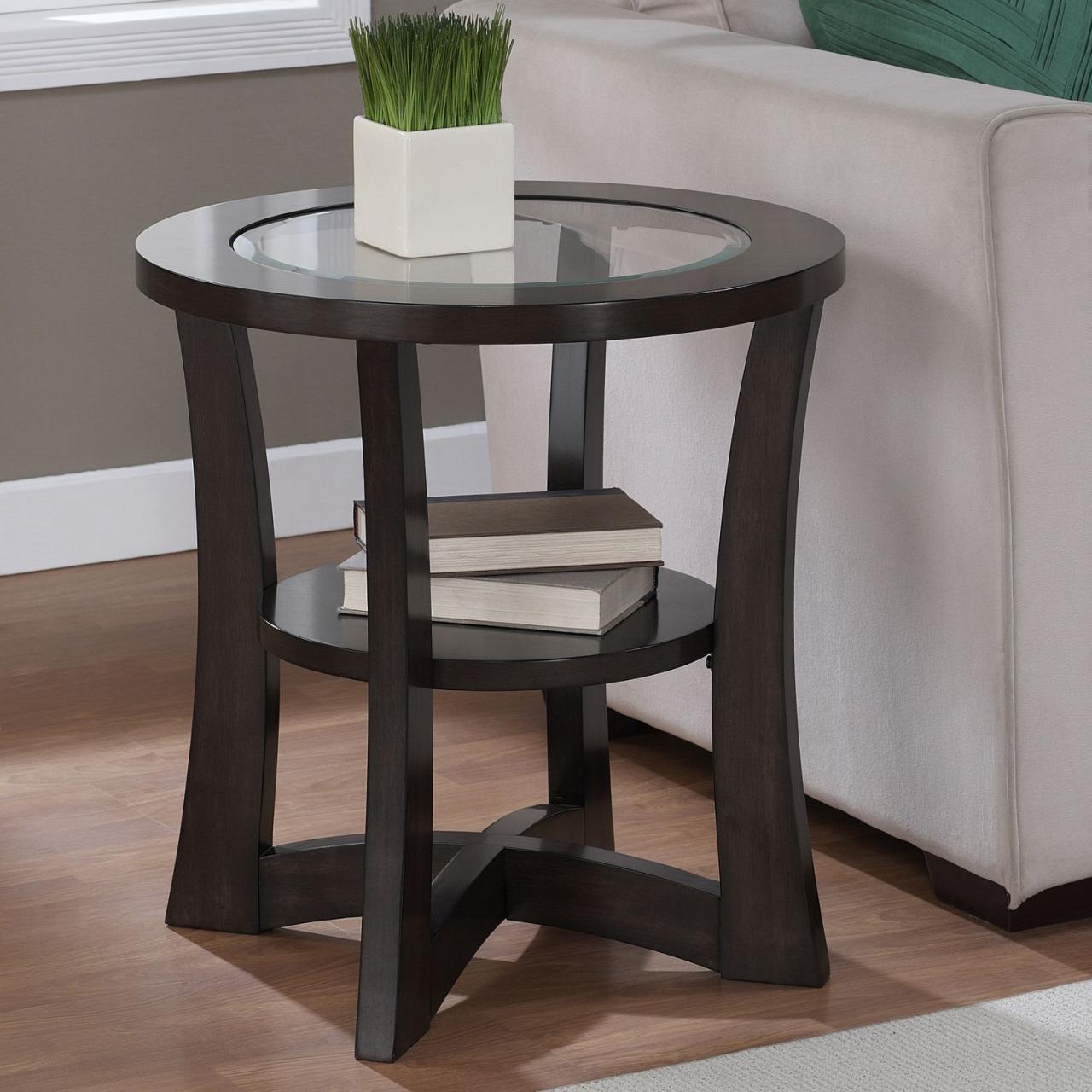End tables for living room: These aren’t just furniture; they’re the unsung heroes of a stylish and functional living space. From adding extra surface area for drinks and remotes to boosting your room’s aesthetic, the right end tables can completely transform your living room vibe. We’re diving deep into the world of end tables, exploring different styles, sizes, materials, and placement strategies to help you find the perfect pair (or more!) for your home.
This guide covers everything from classic traditional designs to sleek modern pieces, offering insights into functionality, maintenance, and even the impact of choosing the right size and color. Get ready to elevate your living room game with our comprehensive guide to end tables – your journey to a perfectly styled space starts here!
Types of End Tables

Choosing the perfect end table can significantly elevate your living room’s aesthetic and functionality. These often-overlooked pieces of furniture play a crucial role in creating a balanced and inviting space. Understanding the different types available will help you find the ideal match for your style and needs.
End tables come in a vast array of styles, materials, and designs, catering to diverse tastes and interior design preferences. The right choice depends on factors such as your existing décor, the available space, and your personal style.
End Table Styles
Categorizing end tables by style helps narrow down your options. Here’s a breakdown of some popular styles, showcasing their unique characteristics.
| Traditional | Modern | Farmhouse | Industrial |
|---|---|---|---|
| Often features ornate details, carved legs, and rich wood finishes. Think classic designs with a timeless appeal. Examples include tables with claw feet or intricate inlays. | Clean lines, minimalist designs, and often incorporates materials like metal, glass, or lacquered wood. Simplicity and functionality are key. Examples include tables with sleek metal frames and glass tops. | Rustic charm with distressed wood finishes, often incorporating metal accents. A sense of warmth and casual elegance is characteristic. Examples include tables made from reclaimed wood with simple, functional designs. | Raw materials like exposed metal, reclaimed wood, and a focus on functionality. A sense of ruggedness and industrial aesthetic is key. Examples include tables with metal pipe legs and a wooden top. |
End Table Materials
The material used significantly impacts an end table’s durability, aesthetic, and overall feel. Understanding the common materials helps in making an informed decision.
Common materials include wood (solid wood like oak, cherry, or mahogany, or engineered wood like MDF or particleboard), metal (steel, iron, aluminum), glass (tempered glass for safety), and composite materials (combinations of wood, plastic resins, and other materials). Each offers a different look and feel, influencing the overall style of the piece.
End Table Design Features, End tables for living room
Beyond style and material, several design features distinguish different end tables. These features contribute to the overall look and functionality.
Key design elements include the table’s legs (straight, tapered, curved, or pedestal), its shape (square, round, rectangular, or oval), and any embellishments (carved details, metal accents, or painted finishes). Consider the size and height of the table in relation to your sofa and the overall room proportions. Storage features like drawers or shelves also significantly impact functionality.
Functionality and Features
End tables, seemingly simple additions to a living room, offer a surprising array of functionality and features that significantly impact both aesthetics and practicality. Choosing the right end table hinges on understanding how these features contribute to your overall living space design and your personal needs. Let’s delve into the practical aspects and explore how different features can transform your living room experience.
Choosing the perfect end tables for your living room can dramatically impact the overall aesthetic. The flow between spaces is key, and a seamless transition from your cozy living area to a stunning kitchen is essential. Check out this article on luxury kitchen design with open concept floor plan for inspiration on creating a cohesive home design.
Ultimately, your end tables should complement the overall style, creating a sophisticated and inviting atmosphere.
Beyond their decorative role, end tables serve crucial practical functions. Their design often incorporates features that enhance usability and storage, making them more than just pretty pieces of furniture. The most significant of these features revolve around storage solutions and ergonomic considerations.
Storage Solutions in End Tables
The availability of storage significantly boosts an end table’s practicality. Drawers provide discreet storage for remotes, magazines, and other small items, keeping your living room clutter-free. Shelves, on the other hand, offer open storage, perfect for displaying decorative items or books, adding visual interest to the space. Some end tables cleverly combine both drawers and shelves, offering a versatile storage solution.
Consider a scenario where you have a small living room: an end table with drawers can keep remotes and charging cables hidden, while open shelves could display family photos or a small plant. This maximizes space and maintains a clean, organized look.
Height Adjustability and Wheels
Height adjustability is a less common but incredibly valuable feature, particularly for those with varying seating heights or those who frequently rearrange their furniture. Adjustable end tables allow you to customize the height to perfectly complement your sofa or armchair, ensuring comfortable access to surfaces. Wheels, similarly, add a touch of convenience, allowing for easy movement and rearrangement of the table.
Imagine needing to quickly clean under the sofa: a table with wheels can be effortlessly moved, making cleaning much easier. In a large living room, the ability to easily move the end table to accommodate different seating arrangements or activities becomes invaluable.
Comparing Feature Benefits for Different Layouts
The ideal features for an end table depend heavily on the layout and size of your living room. In a small living room, a compact end table with drawers is a better choice than a large, bulky one with open shelving that might overwhelm the space. Conversely, in a spacious living room, a larger end table with ample shelving can serve as a stylish display unit.
For a living room with limited floor space, a slim, wall-mounted end table can be a space-saving solution, providing a convenient surface without taking up valuable floor area. A family room with children might benefit from an end table with closed storage to keep toys and clutter contained. The choice of features should be driven by the specific needs and characteristics of your living room.
Size and Dimensions: End Tables For Living Room

Choosing the right size end table is crucial for both functionality and aesthetics. A table that’s too large will overwhelm the space, while one that’s too small will look insignificant and underutilized. Understanding standard dimensions and how they relate to your sofa and room size is key to making the perfect choice.Standard end table dimensions vary considerably depending on the style and material.
However, understanding general ranges will help you narrow down your options. Consider your living room’s overall size and the scale of your furniture to ensure a cohesive and balanced look.
Standard End Table Dimensions by Style
The dimensions of an end table are heavily influenced by its style. A sleek, modern end table might be smaller and more compact than a traditional, ornate piece. Below is a table illustrating typical dimensions:
| Style | Height (inches) | Width (inches) | Depth (inches) |
|---|---|---|---|
| Modern/Minimalist | 24-28 | 18-24 | 12-18 |
| Traditional | 26-30 | 20-26 | 14-20 |
| Farmhouse | 28-32 | 22-28 | 16-22 |
| Industrial | 24-28 | 18-24 | 14-20 |
Note: These are average dimensions, and individual pieces can vary significantly. Always check the specific dimensions provided by the manufacturer.
Determining Appropriate End Table Size
To determine the appropriate size of your end table, consider the size of your sofa and the overall dimensions of your living room. A good rule of thumb is to choose an end table that is roughly the same height as the seat of your sofa, or slightly lower. The width should be proportionate to the sofa; a large sofa needs a larger end table, and vice versa.
Avoid end tables that are so large they impede traffic flow or make the room feel cramped. For instance, in a small living room with a loveseat, a smaller, round end table (around 18-20 inches in diameter) would be more appropriate than a large rectangular one. In contrast, a spacious living room with a large sectional might comfortably accommodate two larger rectangular end tables (around 24 inches wide).
Impact of End Table Size on Room Aesthetics
The size of your end table significantly impacts the overall look and feel of your living room. Smaller end tables create a more open and airy feel, ideal for smaller spaces. They can also be used in pairs to flank a larger sofa without overwhelming the room. Larger end tables, on the other hand, can create a more substantial and grounded feel, especially in larger rooms.
However, in smaller spaces, they might make the room feel cluttered and cramped. Consider the style of your room as well; a large, ornate end table might be perfect for a traditional living room, but it would look out of place in a minimalist space. For example, using oversized end tables in a small living room with a small sofa can create a visually unbalanced and cramped environment.
Choosing the right end tables for your living room can significantly impact its overall aesthetic. To maximize your home’s appeal and ensure a quick sale, consider incorporating strategic staging elements; check out these luxury home staging tips for quick sale for inspiration. Remember, stylish yet functional end tables, complementing your overall design scheme, are key to creating a luxurious and inviting living space that buyers will love.
Conversely, placing small, delicate end tables in a large living room with a substantial sofa can make the furniture appear disproportionate and less impactful.
Placement and Arrangement

Strategic placement of end tables is crucial for optimizing your living room’s functionality and aesthetic appeal. More than just functional pieces, end tables significantly impact the overall flow, ambiance, and visual balance of the space. Consider them the unsung heroes of interior design, quietly enhancing both comfort and style.Choosing the right spot for your end tables involves understanding your living room’s layout and your personal preferences.
A well-placed end table can seamlessly integrate into the existing décor, while a poorly positioned one can disrupt the room’s harmony and hinder movement. This section explores different placement strategies and their effects on space and traffic flow.
Visual Examples of End Table Placement
Imagine a spacious living room with a plush, L-shaped sofa. Two matching end tables flank the sofa’s shorter sides, each topped with a stylish lamp and a stack of coffee table books. The symmetry creates a sense of balance and sophistication, inviting relaxation and conversation. The warm light from the lamps casts a gentle glow, enhancing the cozy atmosphere.
Alternatively, picture a smaller living room with a single, elegant end table positioned next to a comfortable armchair in a reading nook. A small potted plant and a floor lamp complement the table, creating a quiet, intimate space for reading or reflection. The table’s proximity to the chair provides easy access to a drink or book, without encroaching on the walking space.
In a more modern setting, a pair of sleek, minimalist end tables could be placed at opposite ends of a long sofa, each holding a single, sculptural object, emphasizing the clean lines of the room’s design.
Step-by-Step Guide to Strategic End Table Placement
- Assess Your Space: Begin by carefully measuring your living room and identifying potential locations for end tables. Consider the size of your sofa, armchairs, and other furniture.
- Prioritize Functionality: Determine the primary purpose of your end tables. Will they primarily serve as surfaces for drinks and remotes, or will they also house lamps or decorative items? This will guide your placement choices.
- Maintain Traffic Flow: Ensure that end tables are placed strategically to avoid obstructing walkways. Leave at least 18-24 inches of clear space around each table for easy movement.
- Consider Balance and Symmetry: For a balanced look, place end tables of similar size and style on either side of a sofa or sectional. However, asymmetry can also be aesthetically pleasing, particularly in more eclectic settings.
- Experiment with Placement: Don’t be afraid to try different arrangements. Move the tables around until you find a configuration that maximizes both functionality and visual appeal.
Influence of End Table Placement on Traffic Flow
Properly placed end tables enhance the living room’s traffic flow, while poorly placed ones can create bottlenecks and congestion. For instance, placing end tables too close to a walkway can force people to squeeze past, creating an awkward and cramped feeling. Conversely, placing them strategically can guide traffic and define different zones within the room. Consider a large living room where end tables placed near the sofa act as natural dividers, subtly separating the seating area from a nearby conversation pit or entertainment center.
This thoughtful placement not only improves the visual appeal but also streamlines movement throughout the room, creating a more comfortable and inviting atmosphere.
Style and Aesthetics

Choosing the right end table goes beyond functionality; it’s about enhancing your living room’s aesthetic appeal. The style and finish of your end table significantly impact the overall look and feel of your space, complementing your existing décor and creating a cohesive design. Consider the style of your sofa, the color palette of your room, and the overall ambiance you want to achieve.The visual impact of an end table is undeniable.
It’s a key element that contributes to the overall narrative of your living room design. The right piece can elevate the sophistication of a minimalist space, inject warmth into a modern setting, or add a touch of whimsical charm to a bohemian haven. Understanding how different styles interact with various design themes is crucial for achieving a harmonious and visually pleasing living room.
Popular Color Palettes and Finishes for End Tables
Selecting the right color and finish is paramount in achieving the desired aesthetic. Neutral tones, such as white, beige, and gray, offer versatility and seamlessly integrate into various design schemes. Darker shades like black or deep brown can add a touch of drama and sophistication. Natural wood finishes, ranging from light oak to rich walnut, provide warmth and a connection to nature.
Metallic finishes, such as gold, silver, or copper, inject a touch of glamour and modernity.
- White/Beige/Gray: These neutral tones work well in minimalist, transitional, and modern spaces, providing a clean and uncluttered look.
- Black/Dark Brown: These darker shades add depth and sophistication, complementing traditional, contemporary, and even eclectic styles.
- Natural Wood (Oak, Walnut, etc.): These warm tones bring a sense of natural beauty to rustic, farmhouse, and mid-century modern designs.
- Metallic (Gold, Silver, Copper): These finishes add a touch of glamour and modernity, perfect for eclectic, Art Deco, and glamorous styles.
End Table Styles and Interior Design Themes
The style of your end table should complement your overall interior design theme. A minimalist space benefits from a clean-lined, simple end table in a neutral color. A bohemian setting might call for a more eclectic piece with intricate details and a global-inspired design. An eclectic space can handle a mix of styles and materials, creating a visually rich and layered look.
- Minimalist: Sleek, simple designs in neutral colors. Think a small, square end table with clean lines and a simple wooden or metal finish.
- Bohemian: Intricate details, global influences, natural materials (rattan, wood). A round end table with carved legs and a woven basket top would be appropriate.
- Eclectic: A mix of styles and materials. This could be anything from a vintage side table with a unique patina to a modern piece with unexpected materials or a bold color.
- Traditional: Classic designs, often with ornate details and dark wood finishes. A mahogany end table with turned legs and detailed carvings would fit this style.
- Modern: Clean lines, geometric shapes, and minimalist designs. A glass-topped end table with a metal frame exemplifies this.
Texture and Material in End Table Design
The use of texture and material is key to creating visual interest. Mixing different textures, such as smooth glass with rough wood, adds depth and complexity to the design. Consider the materials carefully; the cool smoothness of glass contrasts beautifully with the warm grain of wood. A woven basket top on a metal frame offers a unique textural contrast.
Using a variety of textures and materials can add visual interest and depth to your living room.
Maintenance and Care
Keeping your end table looking its best isn’t rocket science, but a little TLC goes a long way in preserving its beauty and extending its lifespan. Regular cleaning and mindful usage are key to preventing damage and ensuring your end table remains a stylish and functional part of your living room for years to come. The specific care will depend on the material your end table is made from.
Cleaning and Maintaining Wood End Tables
Wood end tables require gentle care to maintain their rich finish and prevent damage. Dust regularly with a soft, dry cloth or feather duster to prevent the accumulation of dirt and grime. For more thorough cleaning, use a slightly damp (not wet!) cloth with a mild wood cleaner or a solution of warm water and a drop of dish soap.
Always wipe the surface dry immediately afterward to prevent water stains. Avoid harsh chemicals, abrasive cleaners, and excessive moisture, which can damage the wood’s finish and lead to warping or cracking. For stubborn stains, try a specialized wood cleaner following the manufacturer’s instructions. Consider applying a wood polish or conditioner periodically to maintain the wood’s luster and protect it from dryness.
Remember to always test any cleaning solution on an inconspicuous area first to ensure it doesn’t damage the finish.
Cleaning and Maintaining Metal End Tables
Metal end tables are generally low-maintenance, but they still require regular cleaning to prevent rust and maintain their shine. Dust regularly with a soft cloth or duster. For more thorough cleaning, use a damp cloth with a mild dish soap solution. Rinse thoroughly with clean water and dry completely to prevent water spots. For stubborn stains or fingerprints, a glass cleaner might be helpful.
Avoid abrasive cleaners, steel wool, or harsh chemicals that can scratch the metal surface. If your metal end table shows signs of rust, use a specialized rust remover following the manufacturer’s instructions. Regular polishing with a metal polish can help maintain the shine and prevent rust.
Cleaning and Maintaining Glass End Tables
Glass end tables offer a sleek, modern look, but they require careful handling to avoid scratches and breakage. Dust regularly with a soft cloth or duster. For cleaning, use a glass cleaner and a microfiber cloth for streak-free results. Avoid abrasive cleaners or scouring pads that can scratch the glass. For stubborn stains, try a specialized glass cleaner or a solution of warm water and vinegar.
Always handle glass end tables with care to avoid accidental breakage. Consider using coasters to protect the glass surface from scratches and water rings.
Preventing Damage and Extending Lifespan
Protecting your end table from damage is crucial for its longevity. Using coasters under drinks, placing protective felt pads under heavy objects, and avoiding harsh chemicals are simple yet effective preventative measures. Regularly inspect your end table for any signs of damage, such as scratches or loose screws, and address them promptly. For minor scratches on wood, you can often use a wood touch-up marker or furniture wax to camouflage the damage.
Loose screws can be tightened with a screwdriver. For more significant damage, consider seeking professional repair services.
Common Issues and Their Solutions
Scratches are a common issue, particularly with wood and glass end tables. As mentioned, minor scratches on wood can often be concealed with wood touch-up markers or furniture wax. Deep scratches might require professional repair. For glass, minor scratches are often barely noticeable, but deep scratches can compromise the integrity of the glass. Stains can be tackled using appropriate cleaning solutions specific to the material of your end table, as discussed above.
Water rings on wood can sometimes be removed with a paste of baking soda and water, but it’s important to test this on an inconspicuous area first. For persistent stains, professional cleaning might be necessary. Loose joints can often be tightened with a screwdriver, but if the problem persists, seek professional help.
Price and Value
Choosing the perfect end table involves considering not just its aesthetics and functionality, but also its price and overall value. Understanding the price range and factors influencing cost helps you make an informed decision that aligns with your budget and long-term needs. Let’s delve into the financial aspects of end table shopping.Price ranges for end tables vary significantly, depending heavily on the materials used and the overall style.
A simple, small end table made from particleboard and laminate might cost anywhere from $50 to $150. Stepping up to solid wood, like pine or oak, can increase the price to $150-$500, with higher-end hardwoods like cherry or walnut pushing prices well beyond $500. Metal end tables, especially those with intricate designs or unique finishes, can also fall within this broader range, or even exceed it.
Finally, designer end tables, often crafted from luxurious materials and featuring intricate detailing, can command prices in the thousands.
Factors Influencing End Table Price
Several key factors contribute to the final price tag of an end table. The materials used, as mentioned, are paramount. Solid wood is inherently more expensive than engineered wood products due to the cost of sourcing, processing, and finishing the wood. Similarly, the type of wood significantly impacts the price; exotic hardwoods are far more costly than common varieties.
The craftsmanship involved is another major factor. Hand-crafted or bespoke end tables, featuring intricate joinery or detailed carvings, will inevitably command a higher price than mass-produced pieces. The brand reputation also plays a role. Established furniture brands with a history of quality and design often charge a premium reflecting their brand recognition and perceived value.
Determining End Table Value
Assessing the value of an end table goes beyond just its initial cost. Consider the quality of construction. Solid wood construction generally indicates greater durability and longevity compared to particleboard. The style of the end table also impacts its value; classic or timeless designs tend to retain their appeal over time, while trendy styles may become dated more quickly.
Finally, the longevity of the piece is crucial. A well-made end table constructed from high-quality materials should last for many years, providing long-term value. Think of it as an investment – a durable, well-designed piece will continue to serve its purpose and potentially appreciate in value over time, unlike a cheaper, less durable option that might need replacing sooner.
For example, an antique end table made from a rare wood and exhibiting superior craftsmanship could significantly appreciate in value over time, becoming a family heirloom.